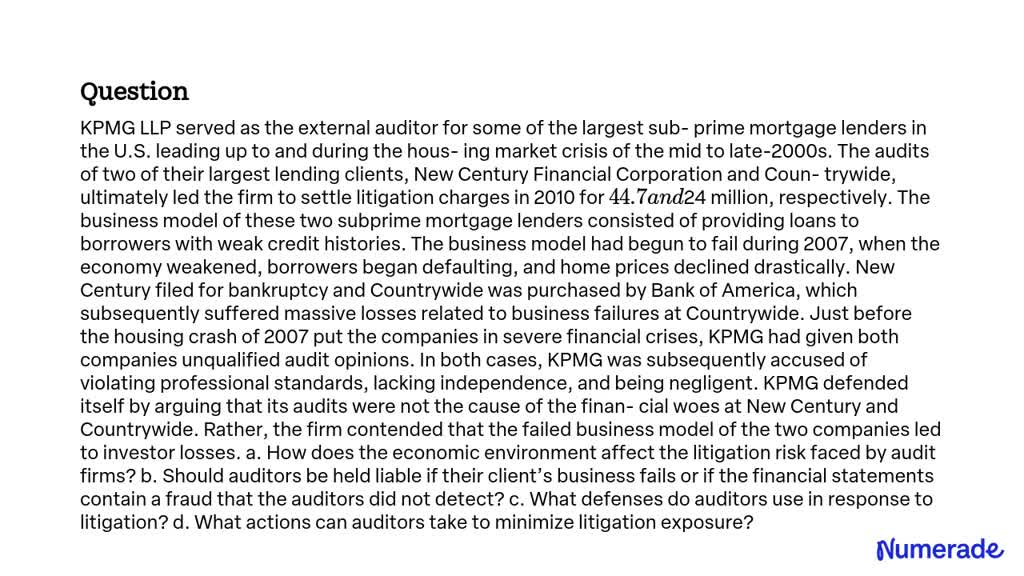In today's financial landscape, subprime lending has become a significant market segment catering to borrowers with less-than-perfect credit histories. As the demand for credit continues to grow, understanding the largest subprime lenders and their operations is crucial for both consumers and investors. This article delves into the world of subprime lending, exploring the key players, risks, and opportunities in this dynamic market.
Subprime lending plays a vital role in providing financial access to individuals who may not qualify for traditional loans. However, the sector is not without its challenges, as it carries inherent risks that require careful consideration. In this article, we will examine the largest subprime lenders, their business models, and the impact they have on the broader financial ecosystem.
Whether you're a consumer looking for credit options or an investor seeking opportunities in the financial sector, this comprehensive guide will provide you with the insights you need to navigate the complex world of subprime lending. Let's begin by exploring the fundamentals of subprime lending and the key players in the market.
Read also:Lynn Collins Husband The Untold Story Behind Her Love Life
Table of Contents
- Introduction to Subprime Lending
- Largest Subprime Lenders in the US
- Key Characteristics of Subprime Lenders
- Risks Associated with Subprime Lending
- Opportunities in Subprime Lending
- Regulatory Framework for Subprime Lenders
- History of Subprime Lending
- Subprime Lending and the Financial Crisis
- Future of Subprime Lending
- Conclusion and Next Steps
Introduction to Subprime Lending
Subprime lending refers to the practice of offering loans to borrowers with lower credit scores or limited credit histories. These loans typically come with higher interest rates to compensate for the increased risk of default. The largest subprime lenders operate in various segments, including auto loans, mortgages, and personal loans.
Why Subprime Lending Exists
Subprime lending bridges the gap for individuals who are unable to access traditional credit products. By offering loans to this underserved population, subprime lenders play a critical role in the financial inclusion of millions of people worldwide.
Key Players in Subprime Lending
The subprime lending market is dominated by several key players, each specializing in different types of loans. These lenders vary in size and scope, but they all share a common goal: providing financial access to borrowers with subprime credit profiles.
Largest Subprime Lenders in the US
In the United States, the subprime lending market is home to some of the largest and most influential financial institutions. These lenders cater to a wide range of borrowers, offering products tailored to their specific needs.
Top Subprime Mortgage Lenders
- Quicken Loans
- Wells Fargo
- JPMorgan Chase
Top Subprime Auto Lenders
- Capital One
- Santander Consumer USA
- CarMax Auto Finance
These lenders have established themselves as leaders in the subprime lending space, leveraging their expertise and resources to serve a diverse customer base.
Key Characteristics of Subprime Lenders
The largest subprime lenders share several defining characteristics that set them apart from traditional lenders. These include:
Read also:Kate Dries Partner The Ultimate Guide To Her Life Career And Love Story
- Higher interest rates to mitigate risk
- Flexible underwriting criteria
- Focus on niche markets
By understanding these characteristics, consumers and investors can better evaluate the offerings of subprime lenders and make informed decisions.
Risks Associated with Subprime Lending
While subprime lending provides valuable financial access, it also carries significant risks. Borrowers face the potential for high interest rates and fees, while lenders must manage the increased likelihood of defaults.
Consumer Risks
- High interest rates leading to debt accumulation
- Potential for predatory lending practices
Lender Risks
- Increased default rates
- Regulatory scrutiny and compliance challenges
Both parties must carefully weigh these risks when engaging in subprime lending activities.
Opportunities in Subprime Lending
Despite the risks, subprime lending presents numerous opportunities for growth and innovation. As technology continues to evolve, lenders are leveraging data analytics and artificial intelligence to improve underwriting processes and enhance customer experiences.
Innovative Solutions
New technologies are enabling subprime lenders to better assess risk and offer more competitive products. For example, alternative credit scoring models are helping to expand access to credit for previously underserved populations.
Regulatory Framework for Subprime Lenders
Subprime lenders operate within a complex regulatory environment designed to protect consumers and ensure fair lending practices. Key regulations include the Truth in Lending Act (TILA) and the Dodd-Frank Wall Street Reform and Consumer Protection Act.
Key Regulations
- Truth in Lending Act (TILA)
- Dodd-Frank Act
- Fair Credit Reporting Act (FCRA)
Compliance with these regulations is essential for subprime lenders to maintain trust and credibility in the marketplace.
History of Subprime Lending
The origins of subprime lending can be traced back to the mid-20th century, when financial institutions began offering loans to borrowers with less-than-perfect credit histories. Over time, the industry has evolved significantly, driven by changes in technology, regulation, and consumer demand.
Key Milestones
- 1970s: Emergence of subprime mortgages
- 1990s: Expansion of subprime lending
- 2000s: Subprime mortgage crisis
Understanding the historical context of subprime lending provides valuable insights into its current state and future trajectory.
Subprime Lending and the Financial Crisis
The subprime mortgage crisis of 2007-2008 highlighted the risks associated with subprime lending. Widespread defaults on subprime mortgages led to a global financial meltdown, prompting regulators to implement stricter oversight of the industry.
Lessons Learned
In the aftermath of the crisis, subprime lenders have adopted more conservative lending practices and increased transparency in their operations. These changes aim to prevent a recurrence of the events that led to the financial crisis.
Future of Subprime Lending
Looking ahead, the subprime lending market is poised for continued growth and innovation. Advances in technology and shifting consumer preferences will shape the future of the industry, offering new opportunities for lenders and borrowers alike.
Trends to Watch
- Increased use of fintech solutions
- Expansion into emerging markets
- Focus on financial education and literacy
As the industry evolves, stakeholders must remain vigilant in addressing the challenges and opportunities that lie ahead.
Conclusion and Next Steps
In conclusion, subprime lending plays a vital role in the financial ecosystem, providing access to credit for millions of underserved individuals. By understanding the largest subprime lenders, their operations, and the risks and opportunities associated with the industry, consumers and investors can make more informed decisions.
We invite you to share your thoughts and experiences in the comments section below. Additionally, consider exploring other articles on our site to deepen your knowledge of the financial landscape. Together, we can build a more inclusive and sustainable financial future.

